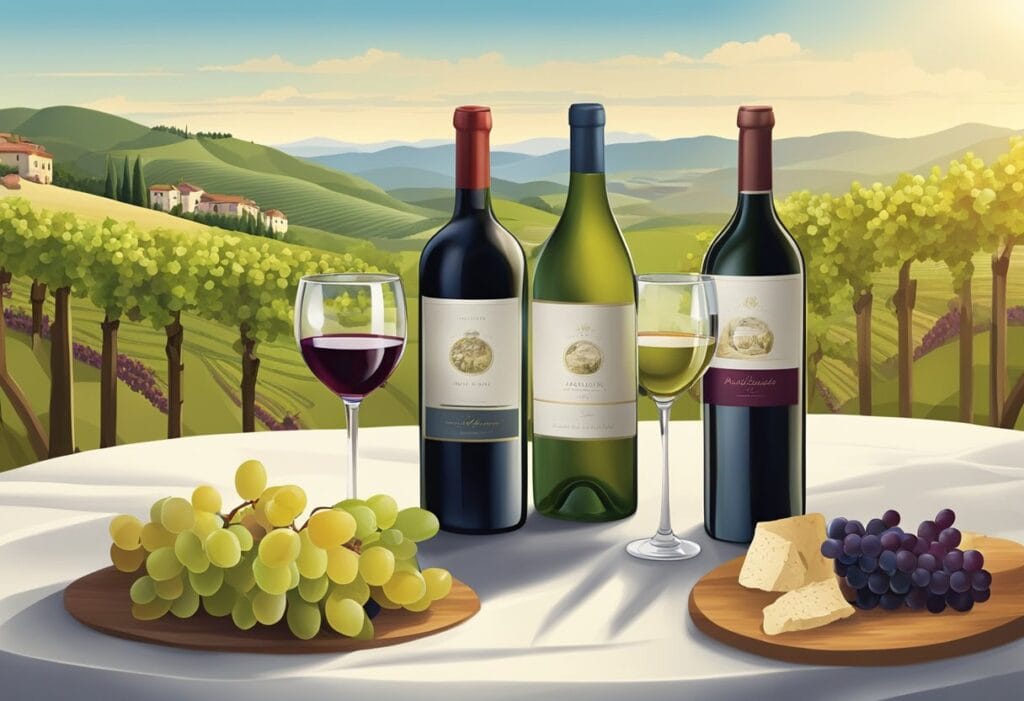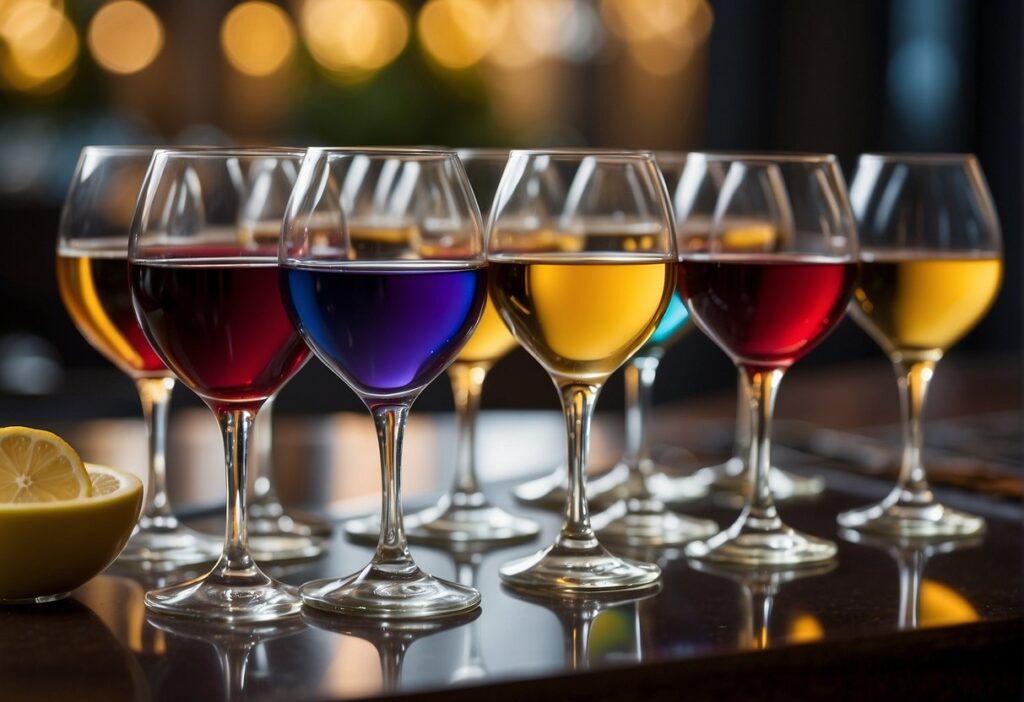Wine is a fascinating beverage with a rich history that has been savored for centuries. Each glass of wine is a reflection of its grape variety, the region where it was grown, and the unique techniques used during production.
From the bold tannins of a Cabernet Sauvignon to the delicate aromas of a Riesling, wines come in a vibrant spectrum of styles and flavors. Understanding the main types of wine can be the gateway to a deeper appreciation of this diverse drink.
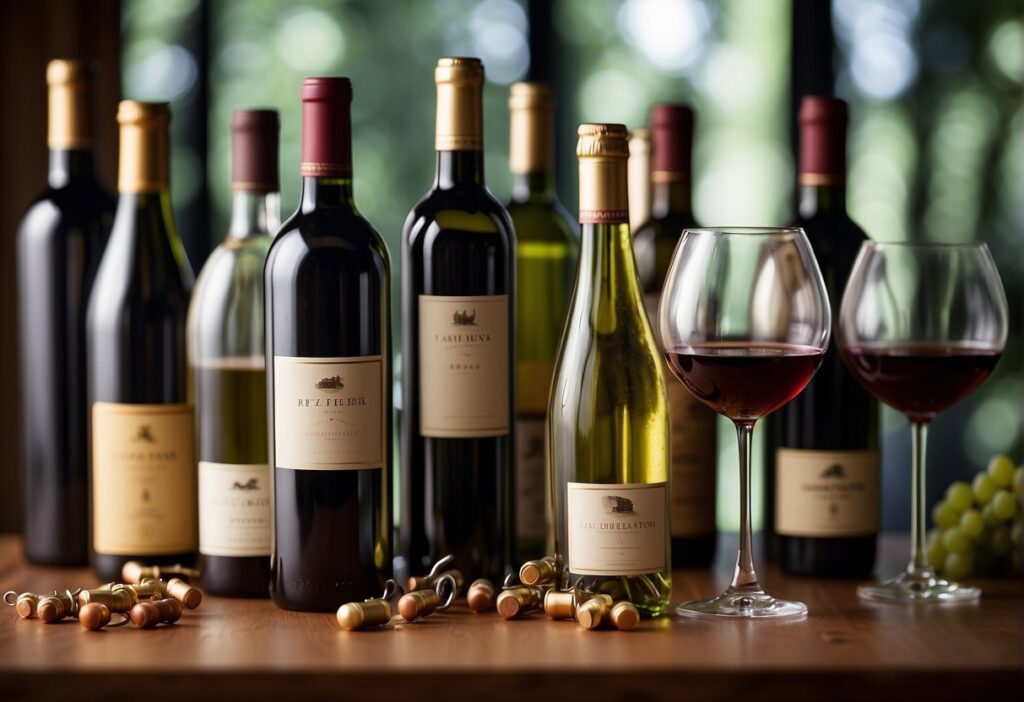
As you explore wines from around the globe, you’ll encounter a range of flavors influenced by local soil, climate, and traditions. Whether you’re pairing a meal with the perfect wine, selecting a bottle as a gift, or simply indulging in the pleasure of tasting, a basic knowledge of wine types is invaluable.
Grasping the fundamentals of wine, including the characteristics that define each category, can enhance your experience and confidence in wine selection.
Key Takeaways
- Understanding wine types is essential for appreciating and selecting wines.
- Flavor profiles and aromas vary significantly across different styles of wine.
- Properly pairing wine with food can elevate the dining experience.
Fundamentals of Wine
Wine is a delightful beverage derived from the fermentation of grapes. It’s the variety of grape, along with the winemaking process, that defines the distinct types of wine.
In your quest to understand wine, you’ll find that tannin, acidity, sugar, and alcohol are the central components affecting flavor and texture.
- Tannin: This naturally occurring compound is present mainly in red wines, contributing to the dry, distinctive texture on your palate. It comes from the skins, seeds, and stems of grapes, and in some cases, from the oak barrels used for aging.
- Acidity: You can thank acidity for the tart and zesty taste in your wine. It also helps to create a balanced and refreshing sip.
- Sugar: During fermentation, yeast consumes grape sugars, converting them to alcohol. Residual sugar levels determine the sweetness of the wine.
- Alcohol: Alcohol gives wine its warming sensation and can enhance the body of the wine.
Speaking of body, think of it as how heavy or light a wine feels in your mouth, much like the difference between skim milk and cream. Wine’s body can be light, medium, or full and is influenced by a combination of factors including alcohol level and tannin.
- Color: It’s a direct result of the grape’s skins. Red wines get their hue from extended contact with their skins, while white wines are processed without the skins.
- Bubbles in sparkling wines come from a secondary fermentation process which traps carbon dioxide inside the bottle.
Remember, a well-crafted wine should have a harmonious balance of these elements. As you taste different wines, observe how these components interact and influence the wine’s overall character. Your palate will become more discerning with each sip. Cheers to your wine adventure!
Main Types of Wine
In discovering the vast world of wines, you’ll encounter five primary categories that each present unique flavors and characteristics. Whether you prefer dry, sweet, or bubbly, there’s a style to match your taste.
Red Wines
Your journey through red wines brings you flavors ranging from bold and rich to light and fruity. Try a glass of Cabernet Sauvignon, known for black cherry and baking spices, if you love full-bodied wines. For something smoother and a bit softer, Merlot is an excellent choice. Don’t miss out on Pinot Noir for its earthy notes or Syrah for a hit of peppery spice. Other notable reds include Zinfandel, Burgundy, and Bordeaux blends.
- Cabernet Sauvignon: Black Currant, Cedar
- Merlot: Velvety, Dark Fruit
- Pinot Noir: Earthy, Red Berries
- Syrah (Shiraz): Bold, Spicy
White Wines
For those who prefer something lighter, white wines offer a refreshing palate. The popular Chardonnay can range from crisp to buttery. Meanwhile, Sauvignon Blanc typically brings zesty citrus and herbal flavors. Looking for something sweet? Riesling and Moscato offer delightful sweetness with fruity notes. Pinot Grigio, Sémillon, and Albariño provide a dry and refreshing experience, typically characterized by their crisp and clean taste.
- Chardonnay: Rich, Oaky
- Sauvignon Blanc: Crisp, Acidic
- Riesling: Sweet, Fruity
- Moscato: Sweet, Light
Rosé Wines
Rosé wines, also known as blush wines, strike a charming balance with flavors that blend the best of red and white grapes. You’ll find them dry or sweet, often carrying notes of strawberry and citrus. Grapes like Grenache and Pinot Gris are commonly used to produce these versatile wines. Enjoy rosé chilled for a delightful sipping experience.
- Grenache: Berry, Smooth
- Pinot Gris: Crisp, Floral
Sparkling Wines
For celebrations or simply to enjoy something effervescent, sparkling wines are your go-to. Champagne, from the region of the same name in France, sets the gold standard with its rich complexity. Italy’s Prosecco offers a fruity, more accessible profile. Meanwhile, Spain’s Cava provides a dry, crisp alternative often at great value. These bubbly options are crafted in a variety of styles, both dry and sweet.
- Champagne: Yeasty, Almond
- Prosecco: Green Apple, Honeydew
- Cava: Pear, Toast
Dessert and Fortified Wines
If you have a sweet tooth, explore the indulgent world of dessert and fortified wines. Luxuriate in a glass of Port or Sherry, each offering rich, intense flavors with a higher alcohol content due to fortification. Other options like Ice Wine and Sauternes are naturally sweet, created from grapes that have been allowed to concentrate their sugars. These wines are perfect for sipping slowly, allowing their complex flavors to unfold with each taste.
- Port: Raisin, Chocolate
- Sherry: Nutty, Dried Fruit
- Ice Wine: Honey, Apricot
- Sauternes: Botrytis-affected, Sweet
Wine Tasting: Aromas and Flavors
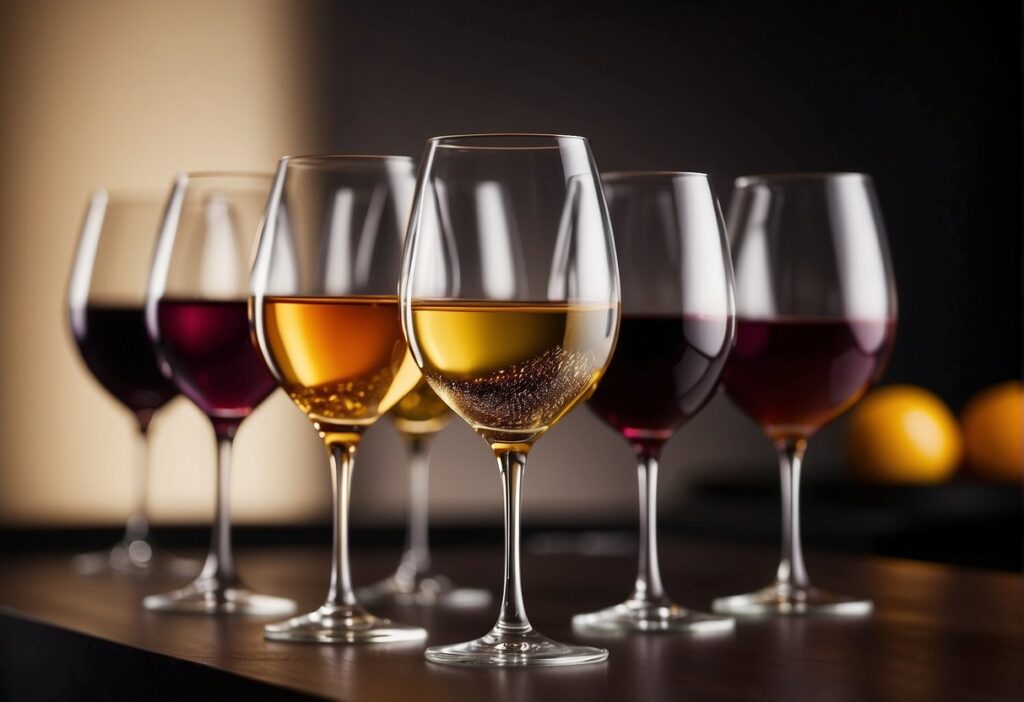
When you embark on wine tasting, understanding the aromas and flavors is crucial to appreciating the complexity of wines. Here’s what to look for:
- Fruitiness: You’ll often detect fruit flavors like melon, berries, or citrus. The sensation of fruitiness contributes to the overall taste profile of the wine.
- Floral and Spicy Notes: Pay attention to the subtle notes of flowers, such as violet or jasmine, and spice undertones like black pepper or anise. These notes can be found in both the aroma and the taste of the wine.
| Wine Characteristic | What to Expect |
|---|---|
| Aroma | The scent of the wine before you take a sip. |
| Flavor/Taste | The impressions on your palate post-sipping. |
| Spicy | A zingy or peppery kick, often in reds. |
| Oak | A hint of vanilla or toast from barrel aging. |
| Savory | Herbal or meaty notes, giving depth. |
Wine Production and Styles
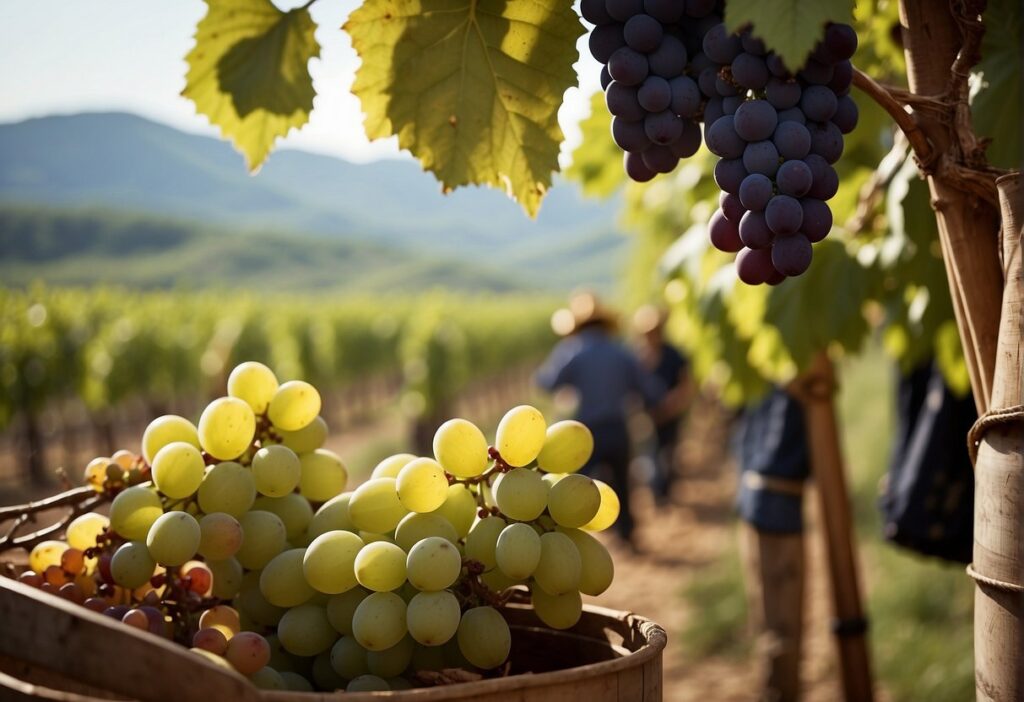
When you explore the world of wine, you will find that wine production is both an art and a science, with various factors influencing the final product.
Styles of wine are categorized broadly, and each style has its unique production methods and characteristics.
Grape Varieties
Each type of wine starts with the selection of grapes. Different grape varieties naturally contribute to the wide array of flavors and aromas found in wine.
For example, a Chardonnay grape will typically yield a different style and flavor profile than a Pinot Noir.
Fermentation
The process of fermentation is where the magic happens. Sugar from the grapes is converted into alcohol, and this process can vary in length and conditions, affecting the style of the wine.
Blending
Many wines are a result of blending various grape types. Winemakers combine different batches to create complex and balanced flavors.
Aging
The aging process is crucial, as it can significantly change the character of the wine.
Wines can be aged in stainless steel, but often they’re aged in oak barrels, which imbue the wine with additional flavors and a distinctive character.
| Wine Attribute | Impact on Style |
|---|---|
| Made (Grapes) | Determines the basic characteristics |
| Blend (Grapes) | Adds complexity and depth |
| Oak (Aging) | Imparts unique flavors like vanilla or spice |
Remember, your preferences are paramount. You may prefer a robust, oak-aged red with hints of earth and spice, or you might gravitate towards a crisp, citrusy white without any oak influence.
Explore different styles and discover what resonates with your palate.
Pairing Wine with Food
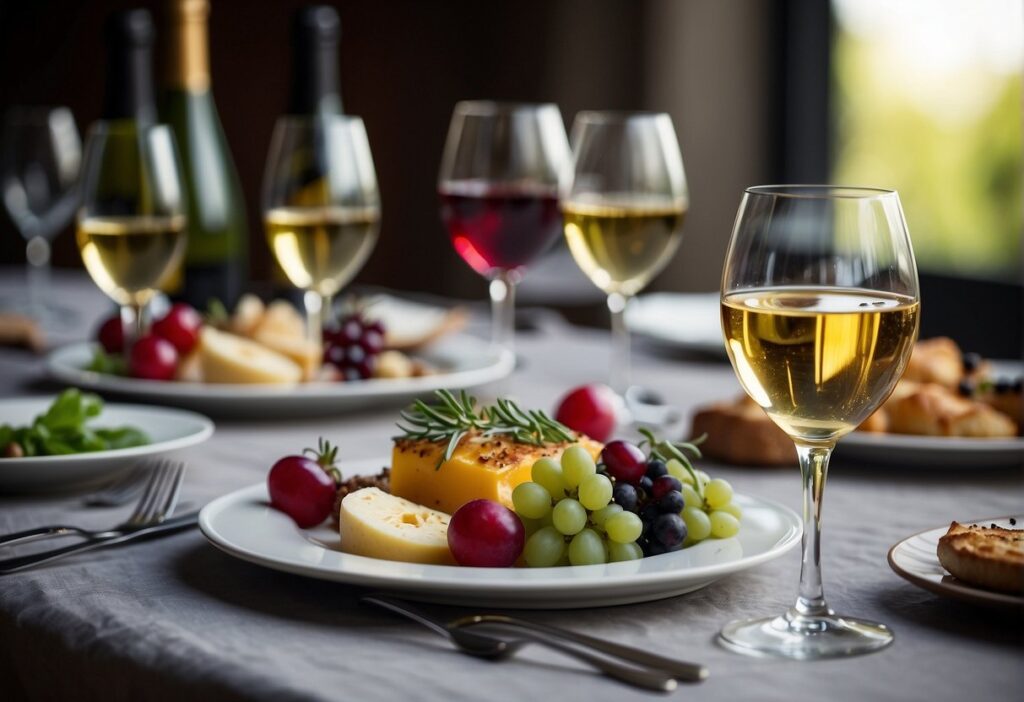
When you’re selecting a wine to complement your meal, consider the dominant flavors of the food.
A basic principle is that lighter dishes pair well with lighter wines; heavy dishes, on the other hand, pair with full-bodied wines.
- For savory dishes with earthy flavors, such as mushrooms or truffles, you might opt for a Pinot Noir.
- Bitter tasting foods, like a salad with vinaigrette dressing, are balanced well with a crisp white wine such as Sauvignon Blanc.
- Acidic foods like tomatoes go hand in hand with wines that have a higher acidity, like a Chianti.
Remember to match the flavor intensity. A delicate dish will be overpowered by a robust wine. Here’s a brief guide:
| Food Type | Wine Suggestion |
|---|---|
| Seafood | Pinot Grigio, Chardonnay |
| Poultry | Chardonnay, Merlot |
| Red Meat | Cabernet Sauvignon, Malbec |
| Desserts | Moscato, Port |
It’s not just about red with meat and white with fish anymore.
The texture of the wine, the taste profile of the ingredients, and even the cooking method can influence the best wine choice.
For a dish with a spicy kick, a slightly sweet wine like a Riesling can offer a cooling effect.
Engage your palate and trust your preferences. If a wine and food pairing pleases your taste, it’s the right choice for you.
Wine pairing is more art than science, and it’s a skill that you can develop with practice and experimentation.
So go ahead, pour a glass, take a bite, and savor the experience.
Wine Regions of the World
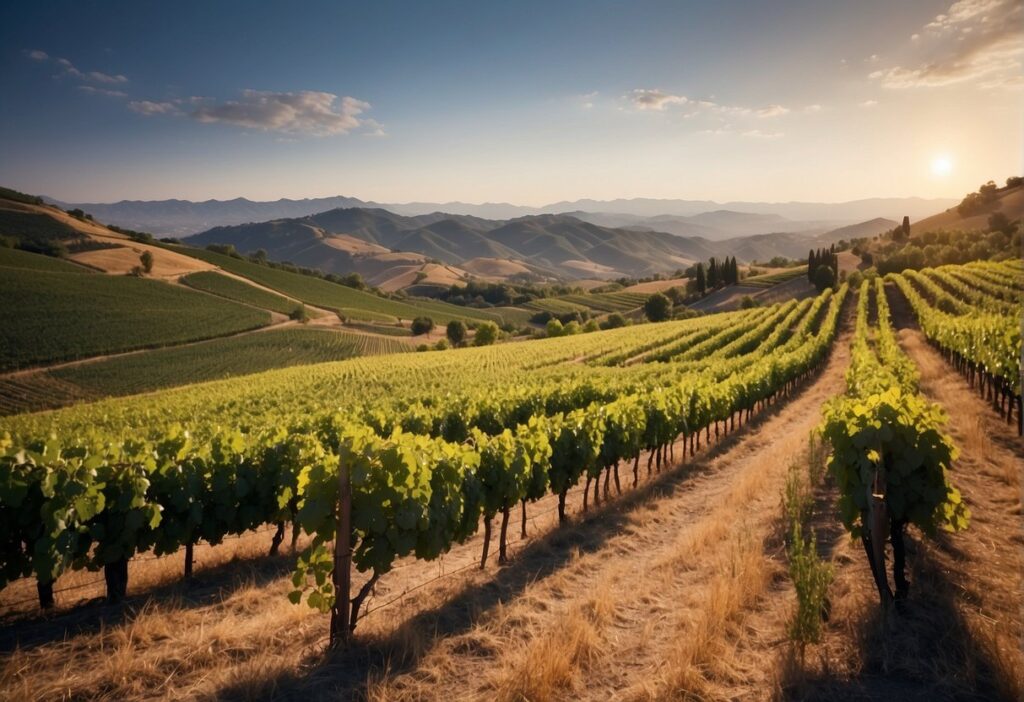
When you explore the vast world of wines, you’ll discover that every region brings its own unique flavor and attributes to the table.
The wine you choose can offer a taste of the local climate, traditions, and grape varieties specific to its region of origin.
European Wines
The cradle of winemaking, Europe offers a staggering array of wines, rooted in deep history and tradition.
Known for its wide variety of grape types, regions like France set the benchmark with areas such as Bordeaux and Burgundy.
Bordeaux is famed for its robust red blends, prominently featuring Cabernet Sauvignon and Merlot. Meanwhile, Burgundy is celebrated for its exquisite Pinot Noir and Chardonnay.
Italy introduces you to the full-bodied Barolo and the effervescent Lambrusco and Prosecco.
Don’t forget Spain, where you can savor the bold flavors of Rioja, made primarily from Tempranillo grapes.
New World Wines
Venture beyond Europe, and you’ll meet New World wines which speak to innovation and experimentation.
The US, particularly regions like California’s Napa and Sonoma Valleys, excel in producing high-quality Cabernet Sauvignon and Chardonnay.
Australia impresses wine lovers with its robust Shiraz, especially from Barossa Valley.
Both countries have shown remarkable ability in capturing the essence of their terroir, allowing you to taste the unique characteristics imparted by local conditions.
Other Notable Regions
While Europe and the newer wine regions take much of the limelight, don’t overlook other areas contributing to the rich tapestry of global wines.
Countries like South Africa, with its Chenin Blanc and Pinotage, or Argentina and Chile with their outstanding renditions of Malbec and Carménère, respectively.
These regions may not always be the first that come to your mind, but they offer spectacular wines that can rival the more established names.
Choosing and Storing Wine
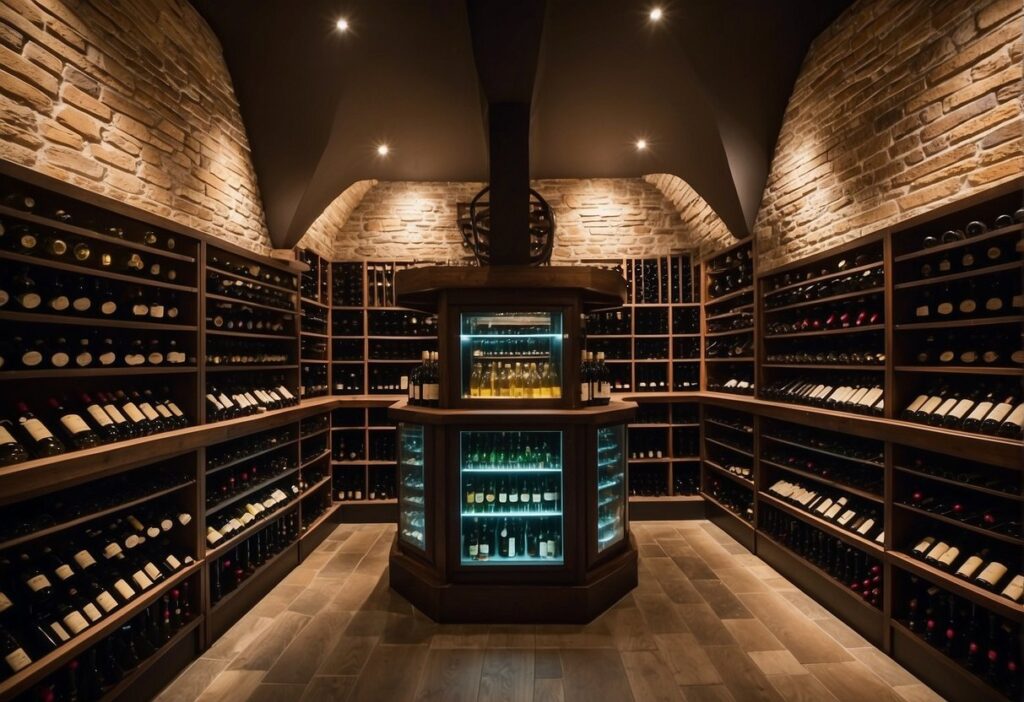
When you decide to choose a bottle of wine, consider the styles that suit your taste.
Are you drawn to bold reds or prefer the lightness of a crisp white? Perhaps the bubbly charm of a sparkling wine is what you fancy for a celebration.
For daily enjoyment or a casual dinner, a mid-range bottle serves well, while special occasions might call for a premium selection.
Once you’ve selected your wine, proper storage is crucial to maintain its quality and flavor profile.
Here’s a quick guide to storing your wines right:
- Temperature: Keep your bottles in a cool, consistently tempered area, ideally between 45°F and 65°F.
- Position: Store wine bottles horizontally to keep the cork moist, which is important in preventing air from entering the bottle.
- Light: Protect your wine from light, especially direct sunlight and fluorescent fixtures, as these can cause premature aging.
Wine Storage Options:
- Wine fridge: Designed to maintain the ideal conditions for wine storage.
- Wine rack: Useful for keeping bottles in the correct position if the ambient temperature is suitable.
- Cellar: The best option for long-term storage, offering a dark, temperate environment.
Serving Wine: Glassware and Temperature
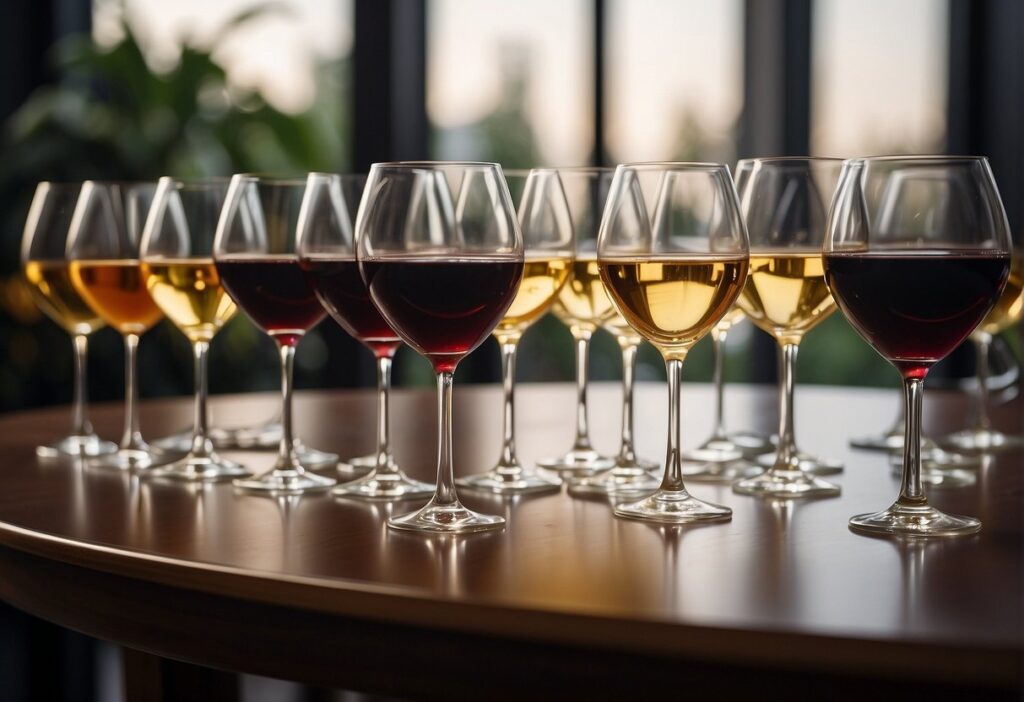
Glassware plays a vital role in your wine experience. Each type of wine has glassware that enhances its unique qualities.
For instance, red wines flourish in glasses with a broader bowl, which gives them more surface area to contact the air. This exposure allows the wine’s aromas and flavors to open up more fully.
In contrast, white wines are best served in glasses with a smaller bowl to preserve the delicate floral and fruity aromas.
Similarly, sparkling wines such as Champagne benefit from tall, thin glasses, often referred to as flutes, that promote the retention of carbonation and the presentation of bubbles.
When it comes to temperature, serving wine at the right degree makes a significant difference:
- Red wines generally thrive when served slightly cooler than room temperature, between 55° and 65° Fahrenheit. A cooler temperature can keep fuller-bodied reds balanced.
- White wines, on the other hand, should be served cold, between 45° to 55° Fahrenheit, which highlights their crispness and acidity.
- Be sure to serve sparkling wines well-chilled, around 38° to 45° Fahrenheit, to enjoy their zest and effervescence to the fullest extent.
To gauge your wine’s temperature accurately, consider using a wine thermometer or trusting your fridge and timing.
